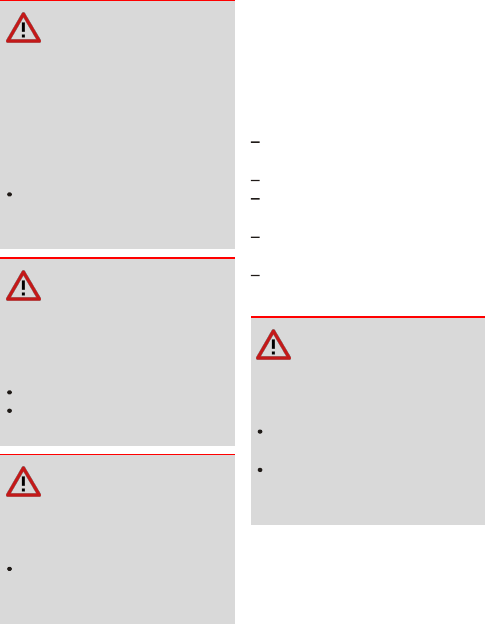Operating Instructions
Table Of Contents
- Table of Contents
- General instructions
- Overviews
- Displays
- Operation
- Ignition switch/steering lock
- Ignition with Keyless Ride
- Emergency-off switch
- Lighting
- Dynamic Traction Control (DTC)
- Electronic chassis and suspension adjustment (D-ESA)
- Riding mode
- Cruise control
- Distance control (ACC)
- Hill Start Control
- Anti-theft alarm system (DWA)
- Tire pressure control (RDC)
- Heating
- Storage compartment
- Central locking system
- Cases
- TFT display
- Audio system
- Setting
- Riding
- Technology in detail
- Maintenance
- Accessories
- Care
- Technical data
- Service
- Appendix
- Index

157
Descending mountain passes
WARNING
Braking should be done pre-
dominantly using the rear
wheel brake when riding on
downhill routes
Loss of braking effect, de-
struction of the brakes due to
overheating
Apply the front and rear
wheel brake and use the
engine brake.
DANGER
Driving with overheated
brakes
Risk of accident due to brake
failure
Adapt driving style.
Use the engine brake to
avoid frequent braking.
WARNING
Failure to observe mainte-
nance intervals
Accident hazard
Comply with the mainte-
nance intervals applicable
for the brakes.
Wet, soiled brakes
Moisture and dirt on the brake
discs and the brake pads result
in a decrease in the braking
effect.
Delayed or poorer braking ef-
fect must be expected in the
following situations:
When riding in the rain and
through puddles.
After washing the vehicle.
When driving on roads with
salt spread on them.
After working on the brakes
due to oil or grease residues.
When driving on soiled roads
or offroad.
WARNING
Poorer braking action due to
moisture and dirt
Accident hazard
Brake until brakes are dry or
clean; clean if necessary.
Brake early until the full
braking action is available
again.










